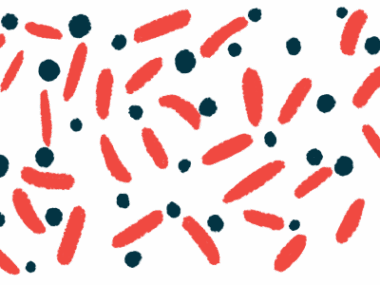Researchers develop tool to study gut-brain connection
Scientists say activity in gastrointestinal tract can influence brain function
Written by |

Researchers have uncovered new evidence that activity in the gut can directly influence brain function, a relationship that’s been proposed to contribute to Parkinson’s disease.
Using specialized fibers with the ability to stimulate nerve cells with light, called optogenetics, the scientists found that by altering cell activity in the intestines of mice, they could mimic behavioral changes observed when certain areas of the brain are stimulated.
The team believes their new technology can be used to further probe how the gut-brain connection might be involved in Parkinson’s and other neurological diseases.
“The exciting thing here is that we now have technology that can drive gut function,” Polina Anikeeva, PhD, a professor at the Massachusetts Institute of Technology (MIT) and the study’s senior author, said in a university news story.
“More importantly, we have the ability to start accessing the crosstalk between the gut and the brain,” added Anikeeva, who is also director of the K. Lisa Yang Brain-Body Center, associate director of the research laboratory of electronics, and member of the McGovern Institute for Brain Research at MIT.
The study, “Multifunctional microelectronic fibers enable wireless modulation of gut and brain neural circuits,” was published in Nature Biotechnology.
Communication between brain, gut aids in functions
The importance of the bidirectional communication between the brain and the gastrointestinal tract has been increasingly recognized in recent years.
“For a long time, we thought the brain is a tyrant that sends output into the organs and controls everything,” Anikeeva noted. “But now we know there’s a lot of feedback back into the brain, and this feedback potentially controls some of the functions that we have previously attributed exclusively to the central neural control.”
The health of the gut has been found to profoundly impact brain health, which has been implicated in a number of neurological diseases, including Parkinson’s.
Anikeeva and her colleagues wanted to better understand how activity of the nervous system in the gut, called the enteric nervous system, impacts the brain and vice versa.
Creating needed optogenetics device
Their approach was based on the existing experimental technique optogenetics, which uses certain wavelengths of light to stimulate populations of nerve cells.
However, “to be able to perform gut optogenetics and then measure the effects on brain function and behavior, which requires millisecond precision, we needed a device that didn’t exist,” said Atharva Sahasrabudhe, the study’s first author. “So, we decided to make it.”
The scientists designed long, flexible fibers equipped with electrodes, temperature sensors, and light emitting devices for optogenetic stimulation. They also have tiny channels that can be used to deliver drugs. Different fiber types are designed with properties specific to the organ they’re intended for. Once implanted, the fibers can be controlled wirelessly.
In mice, optogenetic stimulation of the brain’s ventral tegmental area with the fibers led to the release of dopamine and increased reward-seeking behaviors. Dopamine is a nerve signaling chemical that mediates the brain’s response to rewards, and is also the chemical that’s progressively lost in Parkinson’s.
Next, the team investigated whether stimulating cells in the gut could similarly induce this reward-seeking behavior.
Indeed, both the release of sucrose (sugar) — a rewarding substance for mice — into the intestines through the fibers as well as direct optogenetic stimulation of certain nerve endings in the gut could induce dopamine release in the brain and reward-seeking behavior in the mice.
“We got this … behavior that people have previously seen with stimulation in the brain, but now we are not touching the brain,” Anikeeva said. “We are just stimulating the gut, and we are observing control of central [brain] function from the periphery [body].”
The scientists believe their technology can now be broadly applied to learn more about the roles of certain cell types in this relationship.
“We anticipate that … multifunctional wireless fiber-based tools will provide key insights into the roles of specific cells in bidirectional communication between the peripheral organs and the brain,” the team wrote.
Now, the team plans to use their technology to study whether there is truly a connection between the gut and the brain that underlies diseases like Parkinson’s.
“Maybe there is an opportunity for us to tap into those gut-brain circuits to begin managing some of those conditions by manipulating the peripheral circuits in a way that does not directly ‘touch’ the brain and is less invasive,” Anikeeva suggested.






